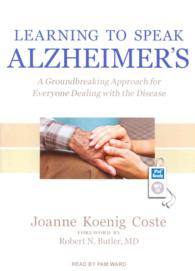- ホーム
- > 洋書
- > 英文書
- > Politics / International Relations
Full Description
Nearly thirty years after the fall of the Soviet Union, debates over paths to market liberalization have produced numerous studies across the social sciences. This groundbreaking work from Oleh Havrylyshyn offers a new perspective. Havrylyshyn, a former official in the post-independence Ukrainian government, provides a unique, primary source account of the people and problems at the heart of economic transitions. Grounded in three decades of data, along with experiential research gleaned from nearly thirty countries, this book contains the most up-to-date assessment of economic transitions in post-communist regions. It critically examines questions of gradual versus radical reforms, the relationship between democracy and market liberalization, and how history, individual personalities, and foreign influence determined political choices. Thorough research and accessible style make this work a valuable resource for students and specialists of economics, political science, and history as well as readers generally interested in international studies, government, and business.
Contents
Introduction; Part I. The Diverse Paths Taken in Transition: 1. Review of key debates at the beginning; 2. Reforms and results of transition: first some facts; Part II. Choice of Strategy: Was it History? Politics? Or People?: 3. Historical legacies: hysteresis vs critical juncture; 4. Reform commitment of political leaders and populations; 5. The role of technocrats; 6. External incentives and pressures; Part III. Domestic Vested Interests and Reforms: 7. The old guard: politicians, technocrats, and red directors; 8. Formation of the oligarchs; 9. Corruption: pervasive, persistent and pernicious; Part IV. Outcomes and Prospects: 11. The transition tapestry: wefts of history, warps-at choice; 12. Quo vadis post-communa?: an epilogue.








